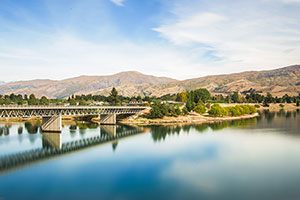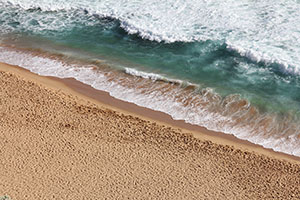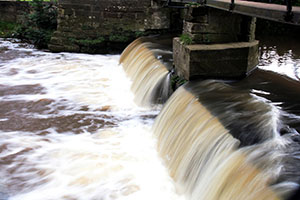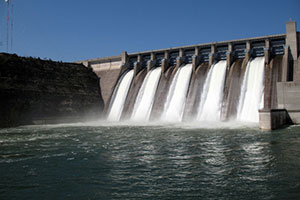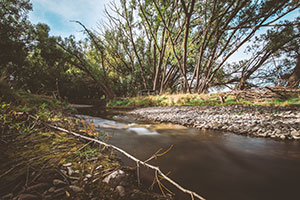Vertex Hydropore specialises in the design and manufacture of containerised Reverse Osmosis plant for a wide range of commercial and industrial applications. Whether you want to expand capability without using valuable factory floor space or you need a fully contained unit at a remote mine site, our range of containerised RO systems represent the perfect solution. Starting with a production rate as low as a few hundred litres per hour right up to volumes of 50,000 litres per hour or larger, with a large selection of sizes in between.
Containerised Reverse Osmosis Plant
Reverse Osmosis Pre-treatment
The nature of the feed water treated by the reverse osmosis plant will affect the pre-treatment components selected. Our “Water Treatment Guide” provides a comprehensive list of different feed waters and their suggested pre-treatment components.
The most common water contaminant removed via pre-treatment is suspended solids. These particulates of dust and other matter suspended in the feed water are not dissolved and have to be removed via physical filtration down to around 1 micron or less for optimal RO performance. This is because reverse osmosis membranes, the primary element of RO plants are not designed to handle large loads of non-dissolved material and will rapidly foul. Therefore appropriate pre-filtration is necessary for any reverse osmosis system to assure correct system operation and mitigate premature membrane fouling.
The nature of the feedwater will suggest the typical level of suspended solids. For example, surface waters such as rivers and dams typically have higher amounts, since the water running across the earth will pick up dirt and other particulates as it flows. While bore water extracted deep from within the earth has much lower amounts since the water is been filtered by the rocks that it passes through prior to collection. These different feed waters will, therefore, require appropriate feed water specific pre-treatment. Typically best practice for surface water is to utilise an Ultrafiltration system before the RO plant. In the case of bore water, however, a simpler multimedia filter is sufficient due to the lower levels of sediment.
Therefore the first step in designing a suitable containerised reverse osmosis plant is to collect and analyse the target feed water. This will provide all the specific water content information required for system design. The analysis information will then be used by the system design software to ensure you get a robust, efficient system that operates day in and day out without issue.
Reverse Osmosis Plant
The Reverse Osmosis unit will be designed and manufactured at our premise in Sydney, Australia by our team of highly trained technicians who build, test, commission and maintain our reverse osmosis plants nationally. Having high levels of cross training ensures that our RO systems deliver the highest levels of reliability and that any issues are identified quickly and resolved efficiently.
Our Containerised Reverse Osmosis units feature:
- ISO High cube containers upgraded with sandwich panel insulation and split system air-conditioners
- All stainless steel frames and wetted parts
- Quality label components such as Berkert, Lowara, Grundfos & Georg Fischer
- Local design & assembly to exceed Australia Standards
- Innovative designs that offer flexible optional extras while maintaining ease of service

We typically construct our containerised reverse osmosis plant with either 4.0” or 8.0” Filmtec or Hydranautics reverse osmosis membranes suitable for the application and we carry a full range of spares and consumables which can be delivered nationwide within days.
Our containerised plants are designed with maximum water efficiency and minimum waste in mind with recovery rates as high as 80-85% depending on the quality of the feed water. Excess salinity or silica amongst other things will limit the recovery rate of the system. An accurate estimation of the final Reverse Osmosis system water recovery can be provided after receiving your feed water analysis and upon completion of the system design.
The containerised plant will include all components of the pre-treatment, the RO unit and any optional post treatment components all plumbed, wired and tested within the container itself. This approach greatly reduces the cost of onsite installation as the system is ready to go upon arrival at site and only need be connected up to water and power. This also provides the added advantage of making it much easier to relocated, something that comes in handy when the system is to be used on multiple sequential projects.
Post Treatment
Following the RO plant, there are a number of options for tailoring the product water to different applications. Sterilisation, Remineralisation and Resin Polishing are all examples of post RO plant processes that can be employed to make sure the system product water meets your specification.
It is quite common, but not necessary for the RO water to go through one of more post treatment processes prior to use and further information is available on this site. Sterilisation is one of the most commonly used types of post-treatment.
Let Us Design Your Next Containerised RO Plant
Once you’ve had a good look over our site and are ready to get started, or even if you simply have a few questions for which you are unsure, contact our friendly staff and have a chat. We’re always happy to help and can handle most Reverse Osmosis requirements and if we can’t we’ll point you in the right direction.










